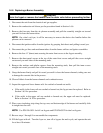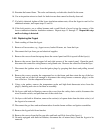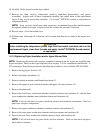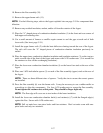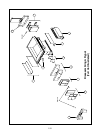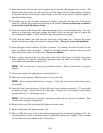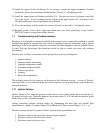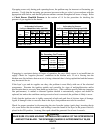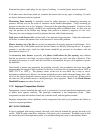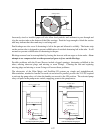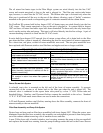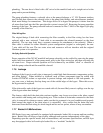1-22
PROBLEMS RELATED TO THE GAS AND/OR ELECTRICAL POWER SUPPLIES
The main indicators of this are that an entire battery of fryers fails to light and/or there are no
indicator lights illuminated on the fryer experiencing ignition failure. Verify that the quick
disconnect fitting is properly connected, the fryer is plugged in, the main gas supply valve is open,
and the circuit breaker for the fryer electrical supply is not tripped.
PROBLEMS RELATED TO THE ELECTRONIC CIRCUITS
If gas and electrical power are being supplied to the fryer, the next most likely cause of ignition fail-
ure is a problem in the 24 VAC circuit. If the fryer is equipped with a built-in filtration system, first
verify that the drain valve is fully closed. (The valve is attached to a microswitch that must be
closed for power to reach the gas valve. Often, although the valve handle appears to be in the closed
position, the microswitch is still open.) If the valve is fully closed, or the fryer does not have a built-
in filtration system, refer to the troubleshooting guides
TROUBLESHOOTING THE 24 VAC CIRCUIT.
Some typical causes of ignition failure in this category include a defective sensing wire in the ignitor
assembly, a defective module, a defective ignition wire, and a defective ignitor.
Occasionally you may encounter an ignition failure situation in which all components appear to be
serviceable and the microamp reading is within specification, but the unit nevertheless goes into ig-
nition failure during operation. The probable cause in this case is an intermittent failure of an igni-
tion module. When the unit is opened up for troubleshooting, the module cools down enough to op-
erate correctly, but when the unit is again closed up and placed back into service the module heats
up and fails.
PROBLEMS RELATED TO THE GAS VALVE
If the problem is not in the 24 VAC circuit, it is most likely in the gas valve itself, but before replac-
ing the gas valve refer to TROUBLE SHOOTING THE GAS VALVE.
1.7.2 Improper Burner Functioning
With problems in this category, the burner ignites but exhibits abnormal characteristics such as
“popping,” dark spots on the burner ceramics, fluctuating flame intensity, and flames shooting out of
the flue.
“Popping” indicates delayed ignition. In this condition, the main gas valve is opening but the burner
is not immediately lighting. When ignition does take place, the excess gas “explodes” into flame,
rather than smoothly igniting.
The primary causes of popping are:
● Incorrect or fluctuating gas pressure
● A defective or incorrectly adjusted combustion air blower
● Inadequate make-up air
● Heat damage to the controller or ignition module
● A cracked ignitor or broken ignition wire
● A defective ignition module
● Cracked burner tile (this typically causes a very loud pop)



